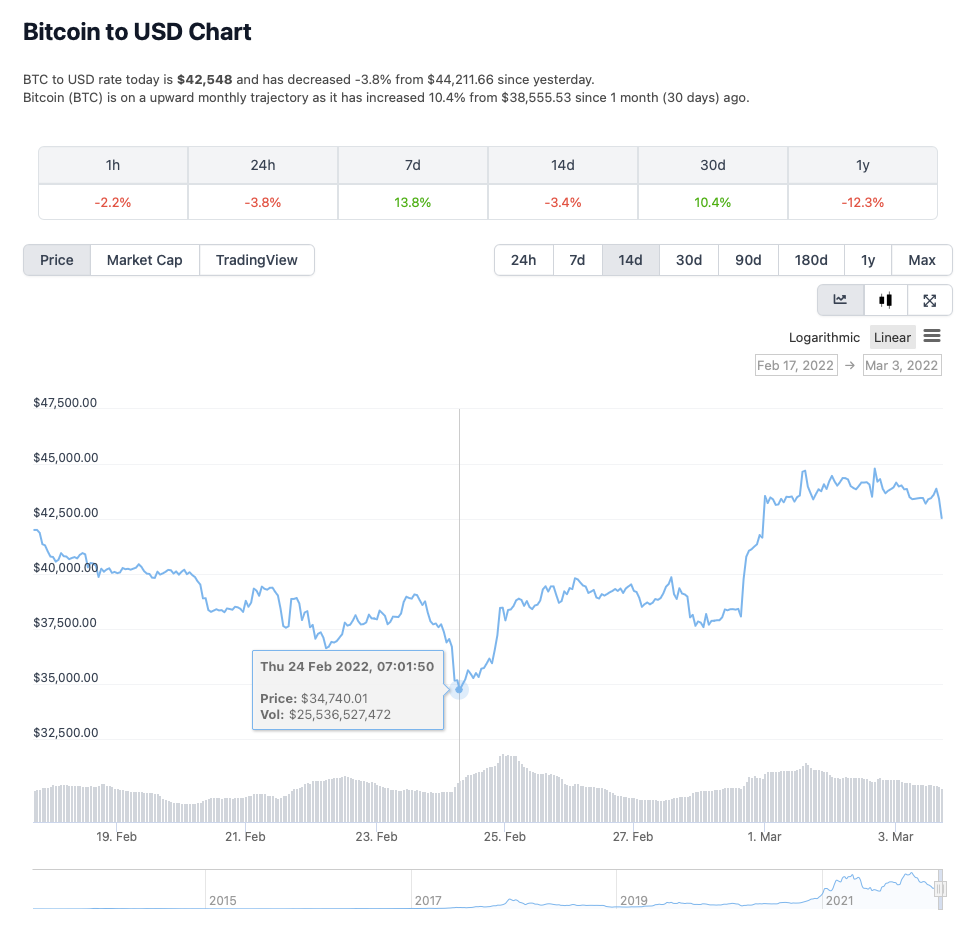NFTs & cryptocurrencies in the context of the Ukraine war
Hello and welcome to MadeMeThink! Once a week I send out this newsletter with curated content, events and examples that have sparked my interest. It's a review of my last 7-days in Web3, NFTs and the Metaverse. Want to follow my thoughts on a daily basis? Then connect with me via Linkedin and Twitter. This article is also available in German.
Last week reminded me how well off most of us in the NFT community are, whose problems are often whether or not their JPEGs are losing value or whether they'll get a spot on the whitelist for the next hyped NFT project. While we were pursuing our first-world problems, a war broke out in Ukraine. I couldn't believe it. For a few days, everyone was quite perplexed as to how to proceed. But then initiatives were formed relatively quickly. Many support Ukrainian artists e.g. by buying NFTs from them. Others send cryptocurrencies directly to Ukraine or to NGOs working there. Over $50 million in crypto donations have been received by the Ukrainian government to this day. The Ukrainian government has now even announced an airdrop for everyone who made a donation.
In addition to smaller donations, I've been tinkering with my adaptable Metakay NFT and putting up a message, namely that the NFT community are Friends of Peace.
Then I bought this pixelart animation by Mr. Costard, which expresses my thoughts of the past week quite well.
Last week's bitcoin price movement also got me thinking. On the first day of the Ukraine war, bitcoin (and with it almost all other cryptocurrencies) crashed severely, to below $35,000. Actually, I was expecting a bear market to come. However, a week after the start of the Ukraine war, the price is up to $44,000 at times. Cryptocurrencies are popular in Russia and Ukraine, and demand for them is high in both countries - especially in the last few weeks. In Russia, cryptocurrencies could be used to circumvent economic sanctions or to protect against the devaluation of the ruble. In Ukraine, cryptocurrencies in a crypto wallet could be an easy tool to safely transport one's capital while leaving the country. To restore a wallet in a new country, on a new computer, it only needs the recovery phrase, which consists of 12 words. Consequently, it does not need any technology to transport it. Only the 12 words of the recovery phrase of the crypto wallet need to be remembered. Especially when you are on the run, this seems to me to be a useful way to transport your liquid assets while avoiding the risk of being robbed.
Last but not least, yesterday I bought this NFT (also from Mr. Costard) where 50% of the sales go to NGOs helping in Ukraine.
Disclaimer: The thoughts published in this publication are my personal opinions and should not be viewed as investment advice. I am not a financial expert. My specialty is entrepreneurship, innovation & marketing. Readers should always do their own research. I own various cryptocurrencies and NFTs, however in many cases it is for the sake of researching the field and gaining a deeper understanding of Web3, NFTs and the Metaverse and not for investment purposes.






